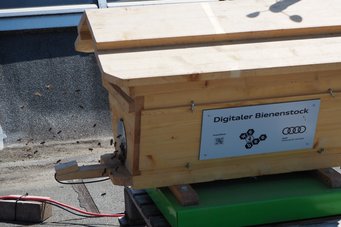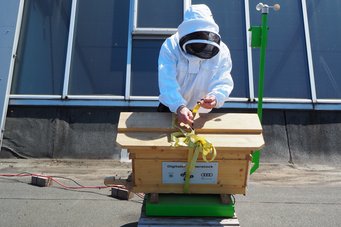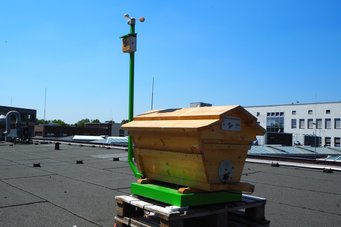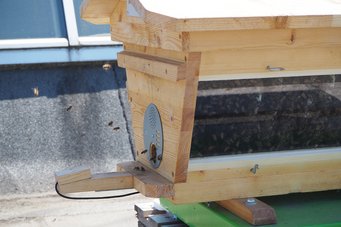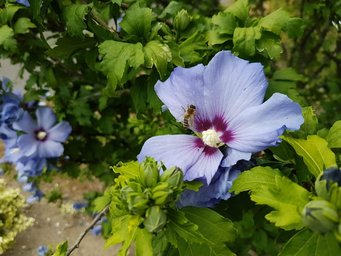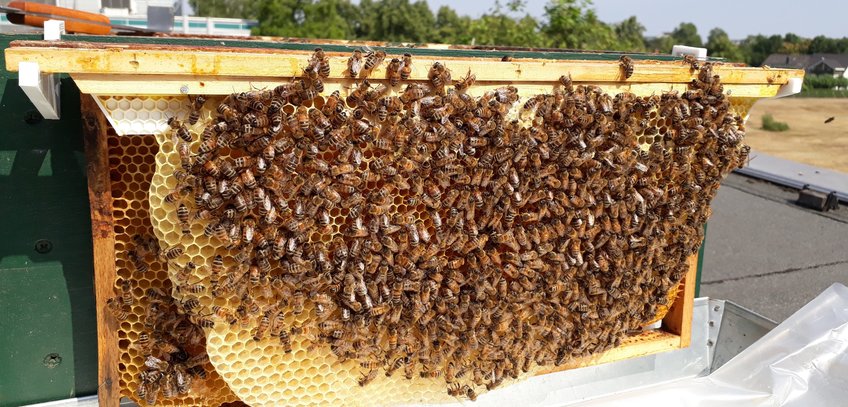
Which environmental conditions do bees need to survive and prosper?
The MPIE as part of the project we4bee
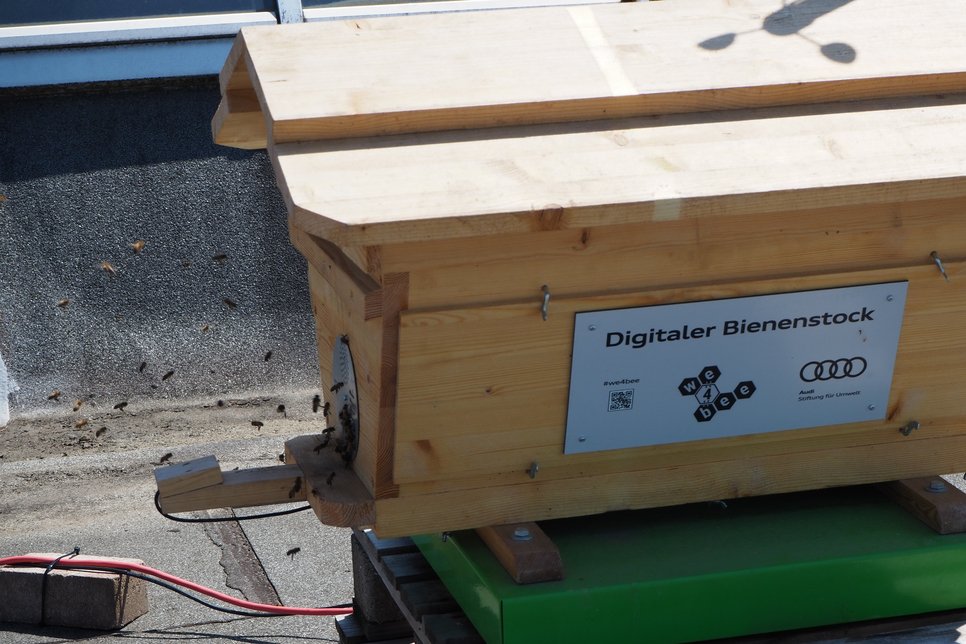
There is a ceaseless humming and buzzing at our roof of the Max Planck Institut für Eisenforschung (MPIE). Those who made it up there can see, hidden in the corner, a small wooden box with 10 honeycombs. Bees are buzzing around this box, carrying pollen to their new home. Cameras and sensors explore the life in the beehive of a colony of about 10.000 bees. The MPIE participates in the project we4bee, which aims to study the life of bees.
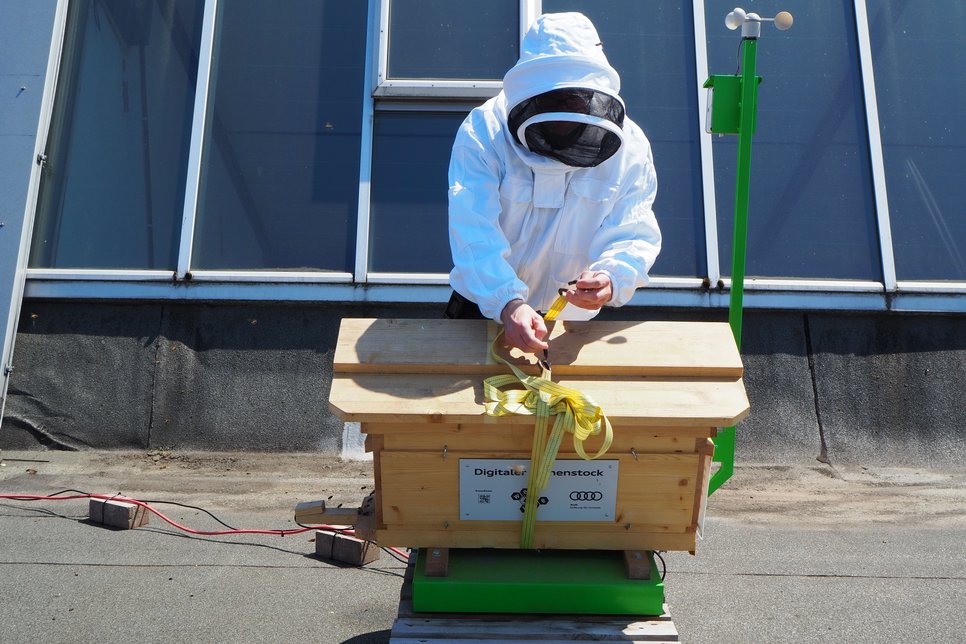
Supporting the increase of insect populations
Several studies report a significant decrease in insect populations. Some of the most affected insects are for example butterflies, beetles and bees. They are all very important for the preservation of our ecosystem, and we should all be aware of that. MPIE is now part of the project we4bee of Prof. Jürgen Tautz, professor emeritus of biology at the Julius-Maximilians-Universität of Würzburg (JMU). Around 100 institutions from Germany are taking part in this initiative. High-tech sensors measure temperature, precipitation, humidity and wind in the surrounding environment as well as fine dust pollution. Cameras record the life of the bees on video. Researchers at the JMU analyse the collected data and publish them on the project website.
A lecture at KopfSalat introduced the idea
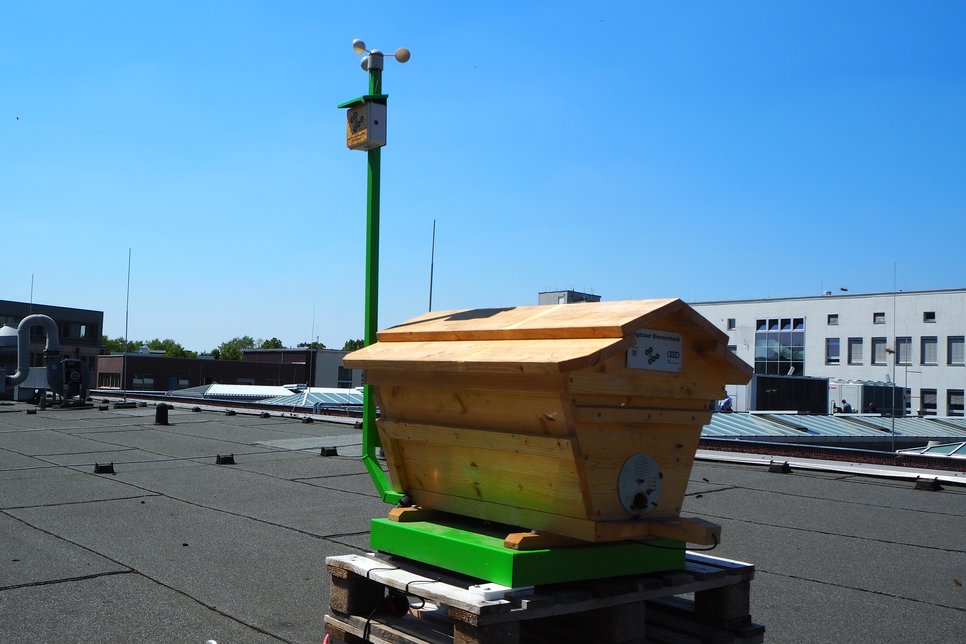
Benjamin Breitbach, from the department "Structure and Nano-/Micromechanics of Materials", initiated the project at MPIE together with Dr. Hauke Springer, head of the group “Combinatorial Metallurgy and Processing”. Breitbach has been doing beekeeping for many years. He was therefore delighted when Prof. Tautz presented the we4bee-project in the lecture series KopfSalat: “We were directly excited about this project and planned how to participate.”, explains Breitbach. The MPIE directors immediately supported these plans: "With this project, we want to support biodiversity and make a contribution against the extinction of insects", explains Dr. Kai de Weldige, executive at MPIE.
The bee as biosensor of its own environment
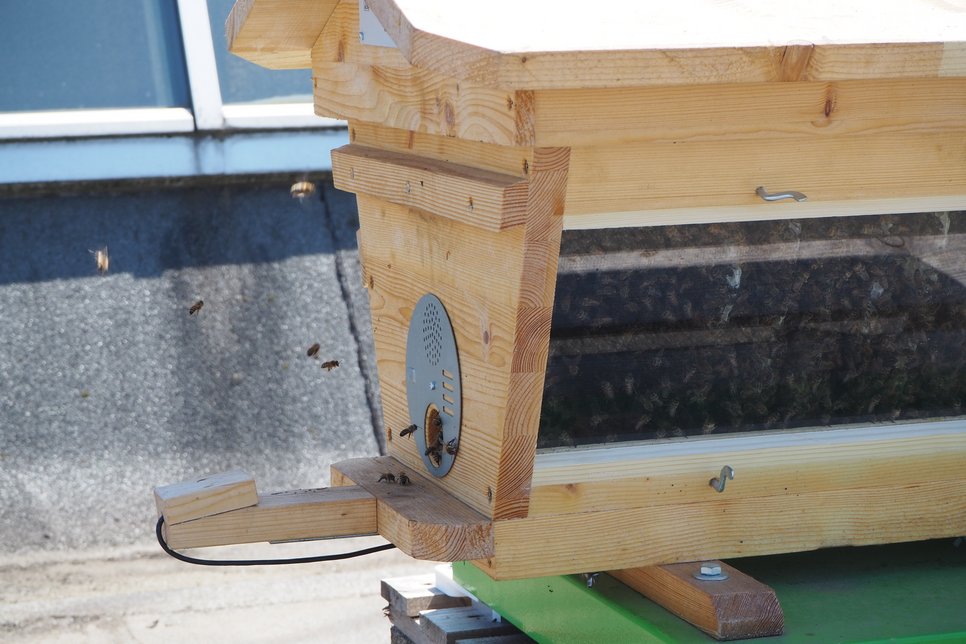
The collected data help beekeepers and scientists to learn more about the life of bees under various environmental influences: “On the basis of these data, a beekeeper could carry out remote maintenance of the hive in the future”, explains Benjamin Breitbach. The bee is also a biosensor of its own environment, which is useful for studying the ecosystem’s health: “Changes in temperature, precipitation and fine dust pollution in the air can be studied by observing the bee colony’s condition”, says Breitbach.
Get live images and information about the environmental conditions in our beehive.
MPIE as ideal measuring point of an urban environment
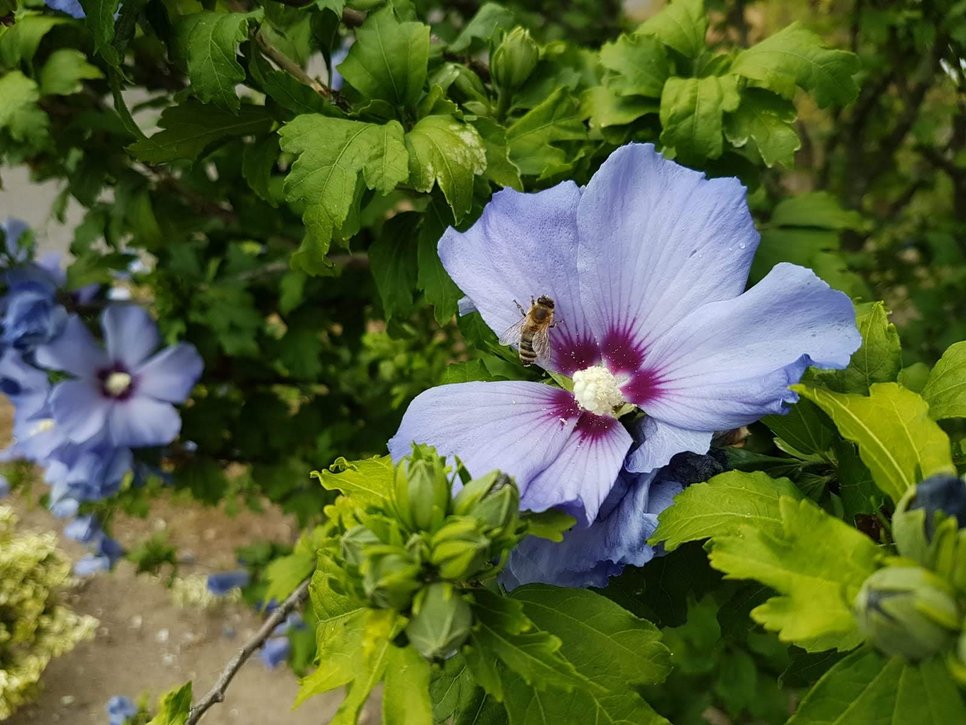
All hives of the project are located in places that offer different environmental conditions – at the countryside, in the city or even in industrial areas: "Due to its location in the center of Düsseldorf, MPIE is the ideal measuring point offering a typical urban environment," explains Breitbach. The data of MPIE bees are compared with the data of bee colonies from other areas and published via the we4bee-App or via the website of we4bee.
We also deal with the topic of sustainability from the perspective of materials science. Learn more about our scientific projects on sustainability.
Author: Saskia Schlesinger
Update, March 2022: The bee population did not survive the hard winter. It has lived from 2019-2022 on the roof top of the MPIE buildings. We hope that we can host a new bee colony soon.
Note: Until 2024 the MPI-SusMat was called MPIE, in the article the old name is used.
